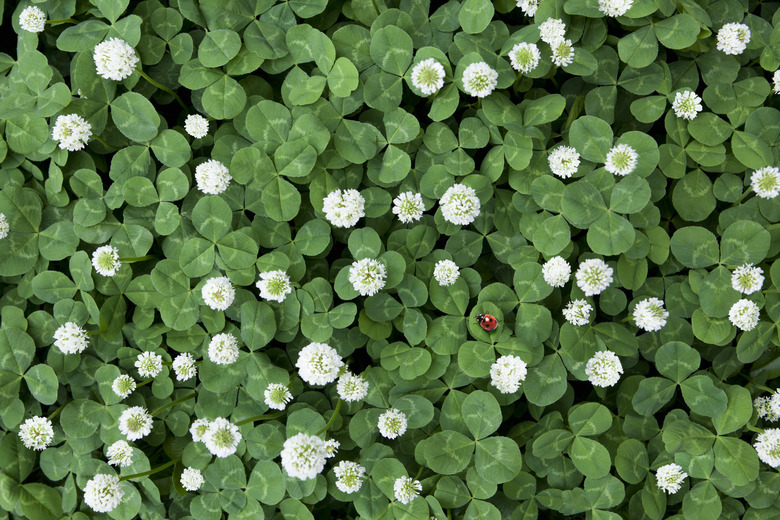How Are Clover Seeds Spread?
Clover is a ground cover plant with about 300 known species. Most have the familiar three-leaf shape and ball-like cluster type flowers in white, red, pink, purple or yellow. White clover is the most common in North America and an important feed crop.
Pollination
Pollination
Honey bees are essential in the pollination of clover. Farmers build bee hives in clover fields to not only aid the plants but to cultivate clover honey.
Seeds
Seeds
Clover seeds are produced in large numbers. They have hard shells and can remain dormant for years until conditions are favorable for germination.
Scarification
Scarification
The seeds' hard shells are broken down by going through an animal's intestinal system, usually cows or sheep. This is called scarification. The animals also help spread the seeds in this fashion.
Manual Spreading
Manual Spreading
Farmers who grow clover spread the seeds on the surface using a cultipacker, which gives the seeds a light covering of soil. Seeding is normally done in February or March and may include a mixture of other grass seeds.
White Clover
White Clover
Though white clover does produce seeds, it also spreads by taking root along its creeping stems at structures called nodes. This helps the clover spread out over a large area. Clover still needs the aid or animals or humans to propagate in new territory.
Cite This Article
MLA
Wachman, Monica. "How Are Clover Seeds Spread?" sciencing.com, https://www.sciencing.com/clover-seeds-spread-5703950/. 22 November 2019.
APA
Wachman, Monica. (2019, November 22). How Are Clover Seeds Spread?. sciencing.com. Retrieved from https://www.sciencing.com/clover-seeds-spread-5703950/
Chicago
Wachman, Monica. How Are Clover Seeds Spread? last modified March 24, 2022. https://www.sciencing.com/clover-seeds-spread-5703950/
